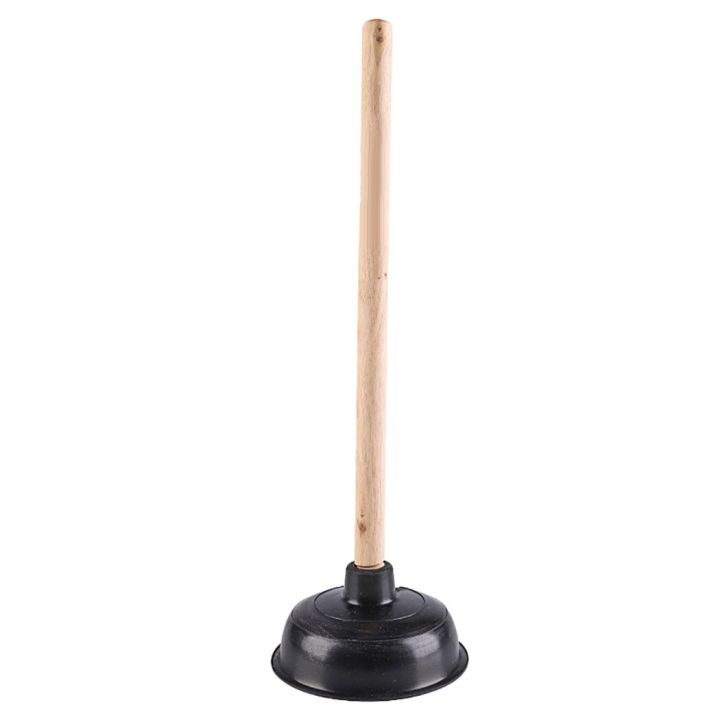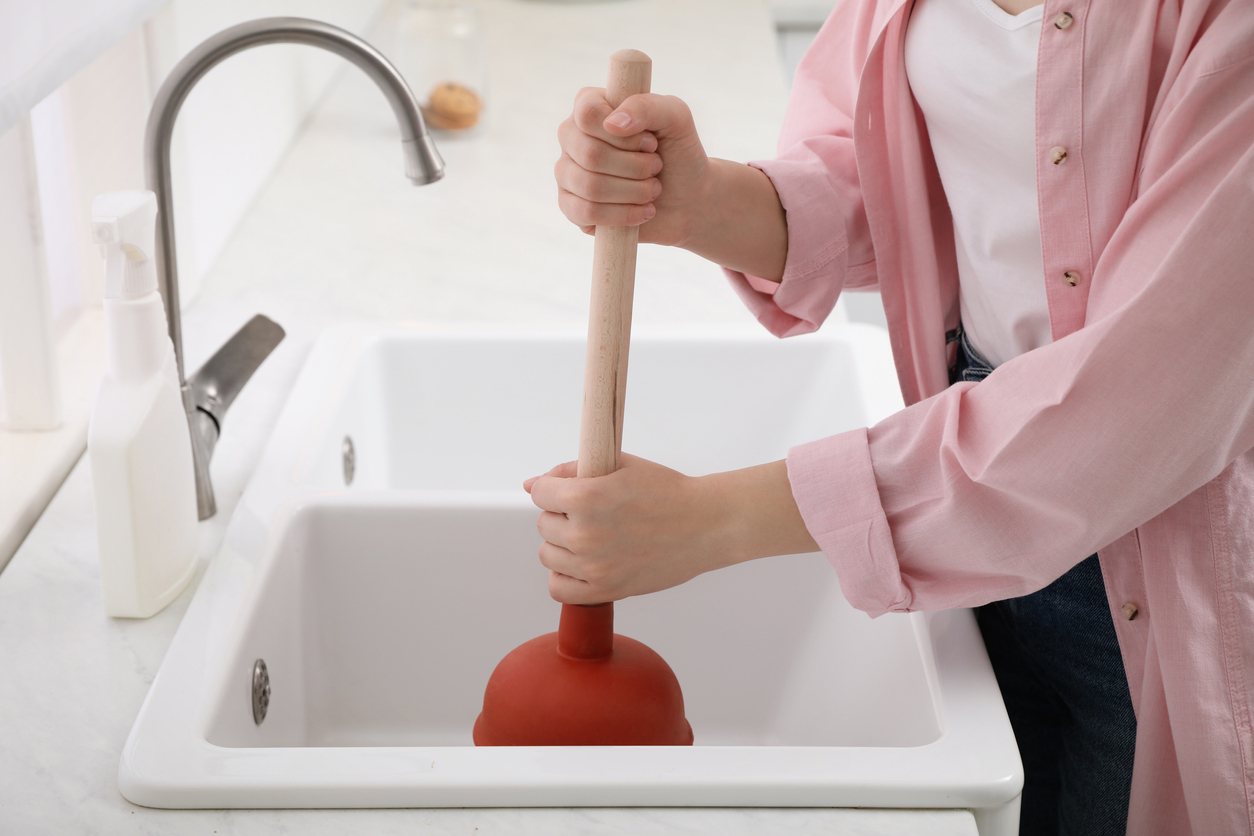How do you feel on the subject of How to Unclog Your Sink with a Plunger?

Introduction
Correct upkeep of home drains pipes is crucial for protecting against blockages and making sure smooth water circulation. Among the trick devices in every property owner's toolkit is the plunger, along with different drainpipe cleaners made to take on persistent blockages successfully. This short article checks out how to make use of bettors and drainpipe cleansers properly to maintain your drains pipes streaming easily.
Section 1: Understanding Bettors
Sorts of Plungers
There are a number of kinds of bettors readily available, each developed for various sorts of drains and blocks. One of the most typical types consist of mug plungers, flange bettors, and accordion plungers.
How Plungers Work
Bettors work on the principle of creating pressure and suction to displace obstructions. When effectively used over a drain, they produce a vacuum that can take out debris or separate clogs.
Selecting the Right Bettor
Choosing the best plunger depends on the sort of drainpipe and the nature of the blockage. Mug bettors are ideal for sinks and bathtubs, while flange bettors are better fit for bathrooms because of their style.
Typical Errors with Bettors
Avoiding these mistakes makes certain efficient plunging: improper seal around the drainpipe, insufficient force, and not clearing bordering debris.
Section 2: Using Plungers Properly
Prep work
Prior to plunging, ensure the plunger covers the drainpipe entirely and forms a limited seal. Clear any kind of noticeable particles around the drainpipe opening.
Method
Beginning with gentle diving motions to build suction. Increase stress gradually, utilizing a constant rhythm. Repeat as necessary up until the drainpipe removes.
Fixing Tips
If plunging does not function, try changing the seal, applying petroleum jelly for a much better seal, or making use of a various sort of bettor.
Area 3: Comprehending Drain Cleaners
Sorts Of Drain Cleansers
Drain cleaners can be chemical or enzymatic. Chemical cleansers make use of solid chemicals to dissolve obstructions, while chemical cleansers use all-natural enzymes to break down raw material.
How Drain Cleansers Work
Chemical cleansers respond with obstructions to liquify them, while chemical cleansers break down natural products like hair and oil without damaging pipelines.
Security Factors to consider
Constantly wear gloves and eye protection when making use of chemical drainpipe cleansers. Ensure appropriate ventilation and follow supplier guidelines meticulously.
Eco-Friendly Alternatives
Take into consideration making use of vinegar and baking soda or enzyme-based cleansers for environment-friendly options that are more secure for pipes and the setting.
Section 4: Making Use Of Drain Cleaning Company Efficiently
Application Strategies
Pour chemical cleansers directly into the drain opening. Permit them to work for the suggested time prior to flushing with warm water. Chemical cleaners ought to rest overnight.
Precautions
Avoid mixing various kinds of cleaners, as this can create harmful fumes. Never ever utilize chemical cleaners in conjunction with a bettor, as spilling can occur.
Dealing With Stubborn Obstructions
For consistent obstructions, consider utilizing a plumbing snake or calling an expert plumbing professional to stop damages to pipelines.
Final thought
To conclude, comprehending how to use bettors and drain cleaners effectively is essential for keeping healthy plumbing systems. By picking the right tools and strategies, house owners can tackle small clogs and protect against significant pipes issues down the line.
How to Use a Plunger to Unclog a Drain
The humble plunger is a simple yet effective tool for breaking clogs in sinks, tubs and toilets. This handy tool is easy to use. You can make the most of its power if you understand how it works. Ready to dive in? Here’s what you need to know.
Safety First!
Never use a plunger with drain chemicals. Water will splash as you work, and the chemicals can spatter, burning skin and eyes. It’s a good idea to use rubber gloves and wear safety goggles when you work on a clog.
Choose the Right Tool for the Job
Plungers come in two different styles. Sinks, bathtubs and showers require a cup plunger. Like its name suggests, the rubber end is shaped like a cup. Use a flange plunger on toilets. These plungers have a rubber funnel extending from the cup. A plunger needs to be big enough to cover the drain.
Ready, Set, Plunge!
Coat the rim: Coat the plunger rim with petroleum jelly. This helps make a better seal.
Block outlets: Hold a wet rag over nearby outlets such as the overflow vent or the drain in a second sink.
Release air: Insert the plunger at an angle into the water. Water will displace air in the cup. A water-filled cup is more forceful than one filled with air.
Keep the plunger upright: Hold the plunger perpendicular to the drain. Use fast, forceful strokes, but make the first stroke gentle. The first stroke can create a splash if the cup still contains air. Thrust the plunger 15 to 20 times.
Snap off the plunger: The final stroke should be a strong upward motion that ends when the plunger snaps off the drain.
Repeat the process: you may need to repeat this sequence several times. When the water drains away, your work is done. High-five! https://plumbernw.com/blog/how-to-use-a-plunger-to-unclog-a-drain/

Application Strategies
Pour chemical cleansers directly into the drain opening. Permit them to work for the suggested time prior to flushing with warm water. Chemical cleaners ought to rest overnight.
Precautions
Avoid mixing various kinds of cleaners, as this can create harmful fumes. Never ever utilize chemical cleaners in conjunction with a bettor, as spilling can occur.
Dealing With Stubborn Obstructions
For consistent obstructions, consider utilizing a plumbing snake or calling an expert plumbing professional to stop damages to pipelines.
Final thought
To conclude, comprehending how to use bettors and drain cleaners effectively is essential for keeping healthy plumbing systems. By picking the right tools and strategies, house owners can tackle small clogs and protect against significant pipes issues down the line.
How to Use a Plunger to Unclog a Drain
The humble plunger is a simple yet effective tool for breaking clogs in sinks, tubs and toilets. This handy tool is easy to use. You can make the most of its power if you understand how it works. Ready to dive in? Here’s what you need to know.
Safety First!
Never use a plunger with drain chemicals. Water will splash as you work, and the chemicals can spatter, burning skin and eyes. It’s a good idea to use rubber gloves and wear safety goggles when you work on a clog.
Choose the Right Tool for the Job
Plungers come in two different styles. Sinks, bathtubs and showers require a cup plunger. Like its name suggests, the rubber end is shaped like a cup. Use a flange plunger on toilets. These plungers have a rubber funnel extending from the cup. A plunger needs to be big enough to cover the drain.
Ready, Set, Plunge!
Coat the rim: Coat the plunger rim with petroleum jelly. This helps make a better seal. Block outlets: Hold a wet rag over nearby outlets such as the overflow vent or the drain in a second sink. Release air: Insert the plunger at an angle into the water. Water will displace air in the cup. A water-filled cup is more forceful than one filled with air. Keep the plunger upright: Hold the plunger perpendicular to the drain. Use fast, forceful strokes, but make the first stroke gentle. The first stroke can create a splash if the cup still contains air. Thrust the plunger 15 to 20 times. Snap off the plunger: The final stroke should be a strong upward motion that ends when the plunger snaps off the drain. Repeat the process: you may need to repeat this sequence several times. When the water drains away, your work is done. High-five! https://plumbernw.com/blog/how-to-use-a-plunger-to-unclog-a-drain/

I'm very excited about How to Use a Plunger to Unclog a Toilet or Drain and I really hope you appreciated the entire blog posting. So long as you liked our blog posting if you please make sure you remember to pass it around. We treasure reading our article about Here's How to Correctly Use a Toilet Plunger.
Call Today